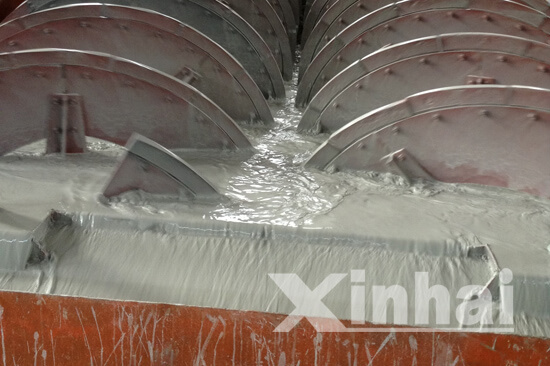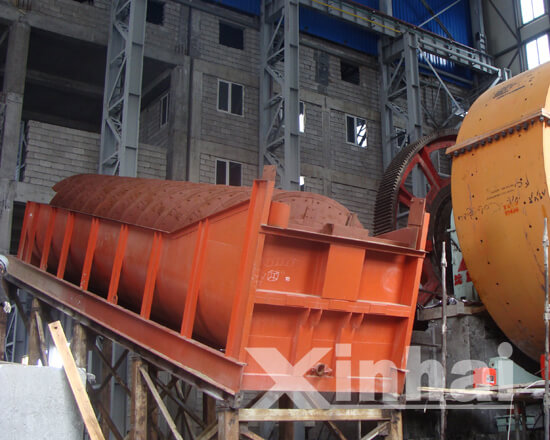
Spiral classifier plays a significant role in various mineral processing equipment. It can be said that spiral classifier is an indispensable part of the mineral processing. Here we introduce three factors that influence the working efficiency of the spiral classifier.
Ⅰ. Equipment Structure
1. Classifying area size
The classifying area size in the tank is the determining factor that affects processing capacity and classifying size. Improving the width of the tank, and increasing the height of overflow dam or decreasing the dip angle can increase the classification area.
2. Overflow dam height.
The height of overflow dam affects the sediment size of ore. In the practical operation, Xinhai is adjusted according to the requirement of grinding and the height of overflow dam of the classifier.

Ⅱ. Operating Conditions
1.Feeding density
Feed density is an important factor for classifying operation. Density not only affects the classification size, but also affects the processing capacity of this particle size.
In the classifying operation, the classifier that deals with a certain ore has the most appropriate slurry density. The processing capacity of classifier reaches a maximum value under the critical density.
2. Feeding amount and feeding degree
When the slurry concentration is a certain number, the ascending velocity and horizontal velocity of slurry will increase with the rising of feed amount, then overflow particle size is coarser. Conversely, the overflow particle size is thinner. Therefore, proper and even feed amount can ensure the smooth operation of classifying and get a good classifying effect.

Ⅲ. Ore Property
The influences of ore property mainly reflect on ore density, feed fineness, and soil content three concepts.
In the case of same concentration and other conditions, the smaller density of classifying materials, the larger slurry viscosity and the coarser size of overflow product. Conversely, the thinner density of the overflow particle size. The ore density is almost proportional to the production capacity of the classifier by weight. The influence of particle size composition and soil content mainly reflected on pulp viscosity. The larger viscosity, the smaller particles settling velocity, the smaller processing capacity and classification accuracy.
Preliminary desliming is necessary if the sludge accounts for large amount in the feeding. However, it doesn't matter if there is little sludge in the feeding of the mechanical classifier. Increasing the pulp viscosity through sludge can inhibit the turbulent performance of the pulp. It is better to classify mud-containing ore and fine-grade ore at a low concentration, which is beneficial to improve classification efficiency.
To find out more about our products and solutions, please fill out the form below and one of our experts will get back to you shortly.